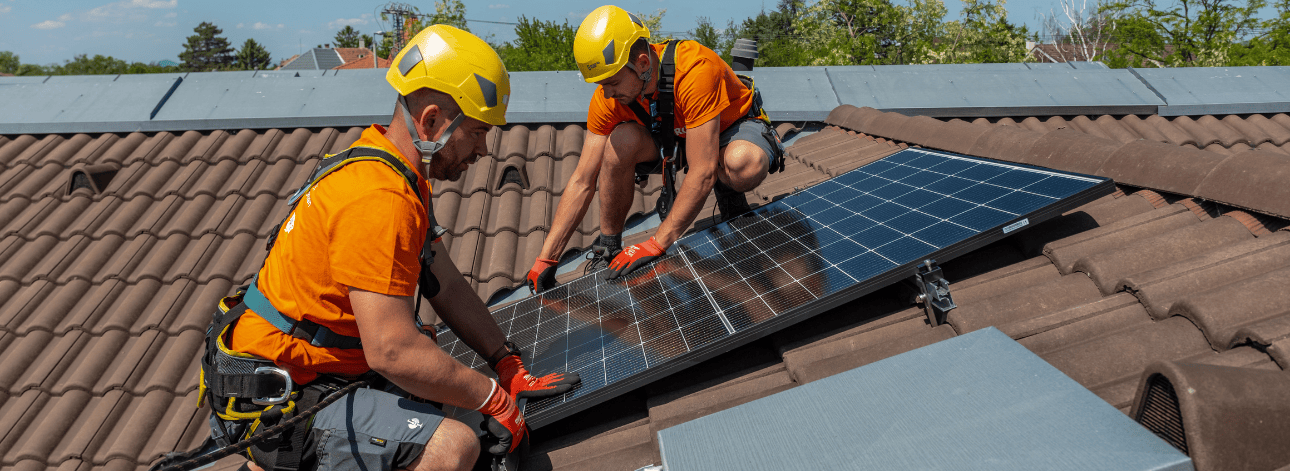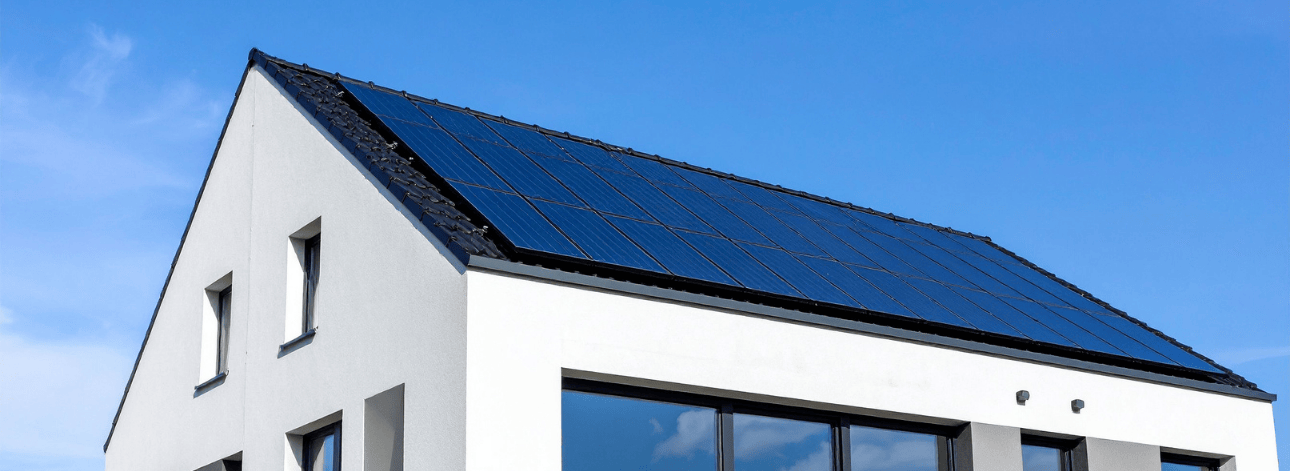The relationship between gross settlement and optimal solar panel size
Gross settlement and the relationship between optimal solar panel size
The installation of solar panel systems is becoming increasingly popular as the demand for renewable energy continues to grow. However, the return on investment is fundamentally determined by the form of settlement. Gross settlement will become the norm from 2024, requiring a completely new approach to system sizing.
The essence of gross settlement is that the energy produced and consumed is not settled on a balance basis (as in the case of net settlement), but separately, at different prices. Therefore, it is crucial to determine the appropriate solar panel size and analyze the consumption profile.
Basics of gross settlement for calculation
In gross settlement, the electricity fed back into the grid and the electricity purchased from the grid are settled separately:
- The service provider typically purchases the energy fed into the grid at a lower price.
- The consumer pays the full residential price for the energy consumed from the grid.
This system means that, in terms of return on investment, the proportion of own consumption is the most important factor. A solar power system is most efficient when the energy can be used directly by the household rather than being fed back into the grid.
This is how the gross settlement principle of solar panels works in practice: here is an example
Example: a household's annual consumption is 5000 kWh, and the annual productionof the installed solar panel system is also 5000 kWh.
- The household directly consumes 60% of the production → no additional costs here.
- The remaining 40% is fed into the grid → the utility bills this at a low price.
- The household purchases the electricity it needs in the evening from the grid → at full price.
Therefore, excessive overproduction slows down the return on investment in addition togross billing.
You can read more about solar PV in our article on photovoltaic systems.
Consumption profile analysis for system sizing
Determining theappropriate size ofa solar panel system begins with examining consumption patterns. Important considerations:
- when is the highest energy demand (e.g., in the evening, for cooling or heating)
- to what extent the household can adjust its consumption to production (e.g., washing, charging electric cars during the day),
- annual, monthly, and daily energy consumption variations.
The higher the proportion of self-consumption, the faster the return on investment with gross billing.
Determining panel size and number with gross settlement
The number and capacity of solar panels should be selected so that the system covers the household's annual energy needs as much as possible.
While it was not advisable to significantly oversize the system in net metering, higher performance can be an advantage in gross metering. An oversized system can cover higher self-consumption for several months, thus providing greater savings in the long term.
The following must be taken into account for the calculation:
- annual consumption in kWh,
- nominal power of the panels in Wp,
- the number of hours of sunshine at the given location,
- the optimal inverter capacity.
Check out the available inverter range for accurate sizing.

Choosing the right solar inverter size is also crucial
The size of the inverter fundamentally affects the economy of the system. An inverter that is too small can cause losses, while one that is too large represents an unnecessary additional cost. The optimal size matches the power of the panels and the consumption profile.
The role of orientation and tilt angle in sizing
The orientation and tilt angleof solar panels not only affect production, but also how closely production coincides with consumption. If the panels produce more during the daytime hours, the household can use a larger proportion of the energy directly → this accelerates the return on investment in gross terms.

Sizing examples for different household consumption patterns
When sizing the system for gross settlement, the goal is not to overproduce, but to ensure that the household can use as much of the generated electricity as possible immediately. This is important because the value of the energy fed back into the grid is lower than the cost of the electricity purchased from the grid.
Small household (2 people, apartment or small family home):
- Annual consumption: approx. 3,000 kWh
- Typical use: lighting, household appliances, small electrical appliances
- Recommended system: 3–3.5 kWp (annual production ~3,500–4,000 kWh)
- Note: even a smaller system can cover the basic consumption of a household, but timed consumption (e.g., washing, dishwashing during the day) greatly improves the return on investment.
Medium-sized household (4 people, average family home):
- Annual consumption: approx. 5,000 kWh
- Typical use: household appliances, air conditioning, occasionally electric heating or DHW boiler
- Recommended system: 5.5–6 kWp (annual production ~6,000–7,000 kWh)
- Note: for this size, it is particularly important in gross accounting that consumption falls as much as possible during daylight hours, as this avoids more expensive grid consumption.
Large household (6 people, larger property, multiple electrical appliances):
- Annual consumption: approx. 7,500–8,000 kWh
- Typical usage: multiple air conditioners, electric heating, heat pump, electric car charging
- Recommended system: 8.5–9.5 kWp (annual production ~9,000–10,000 kWh)
- Note: In such households, smart timing of battery use or consumption (e.g., charging cars during the day) significantly increases the proportion of self-consumption and thus the return on investment.
SOLARKIT recommendations and experiences
In SOLARKIT's experience, accurate sizing is much more important in gross settlement than in net metering. An oversized solar panel system pays for itself more slowly because the utility only buys excess electricity at a low price.
Therefore, the most important factors are:
- the actual annual consumption of the household,
- consumption habits (daytime or evening load),
- local conditions (roof orientation, shading, angle of inclination).
The company offers each customer a personalized calculation that takes into account the family's energy consumption, the characteristics of the building, and future expansion possibilities (e.g., charging an electric car or installing a heat pump).
Is it worth installing a battery for gross settlement?
It is not mandatory, but it can be beneficial. With a battery, the electricity generated during the day can also be used in the evening, thus increasing the proportion of self-consumption. This speeds up the return on investment, especially where evening or night-time energy demand is high.
When does the system pay for itself best in gross settlement?
When consumption coincides as closely as possible with production. For example, if the air conditioning is running during the day or if electric cars are charged during the day, the efficiency of the system increases significantly. Selecting the optimal inverter and sizing it to consumption habits is a basic requirement for a quick return on investment.
How should installers adapt to regulatory changes?
Regulations can affect several areas, from subsidies to grid feed-in conditions. Installers need to keep up to date with current regulations and flexibly adapt systems to changing conditions so that customers always get the best solution.
Can outdoor battery energy storage be coordinated with other systems, such as the grid or hybrid inverters?
Yes. Outdoor batteries can be connected to the grid and hybrid inverters, allowing the energy generated to be stored and used efficiently. This provides additional energy security and allows for more flexible shifting of consumption to cheaper periods.
FAQ – Frequently Asked Questions
1. What is the essence of gross settlement in solar power systems?
The energy generated and the energy purchased from the grid are treated separately. The feed-in tariff is purchased by the utility at a lower price, while the consumer pays the full retail price for the energy purchased from the grid. It is therefore important that as much of the generation as possible is used directly for your own consumption.
2. How large a solar panel system is needed for an average household?
The annual consumption of a family of four is typically between 4,500 and 5,500 kWh. In most cases, a 5-6 kWp system is sufficient, but the exact size is always determined based on the consumption profile, roof orientation, and shading.
3. How do orientation and tilt angle affect system performance?
The best yield in Hungary can be achieved with a south-facing orientation and an inclination angle of 30-40 degrees. If the installation deviates from this, production can be reduced by 10-20%, which directly affects the return on investment in gross accounting.
4. When does the system pay for itself most quickly in gross accounting?
When the household is able to use most of the electricity generated immediately, for example by operating air conditioning, heat pumps, or electric cars during the day. This means that less electricity has to be purchased at a high price from the grid, and less is fed back at a low price.
5. What future factors should be considered when investing?
The regulatory environment, subsidies, grid connection conditions, and electricity prices are constantly changing. It is worth designing the system so that it can be expanded later, for example, with a battery or electric car charging option.

